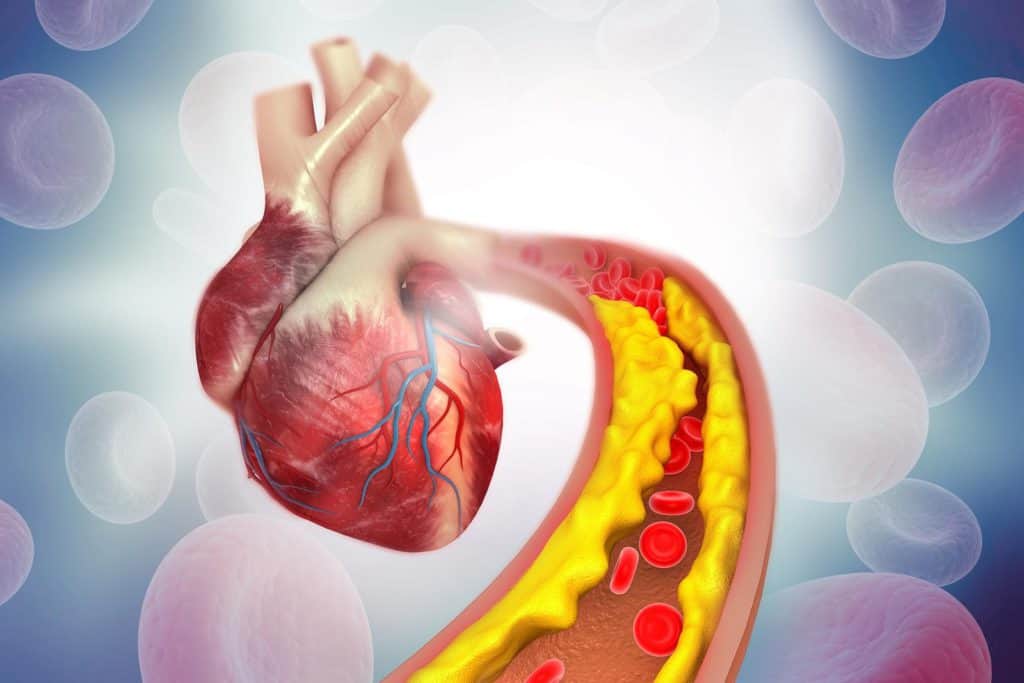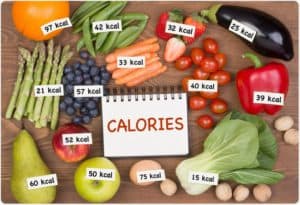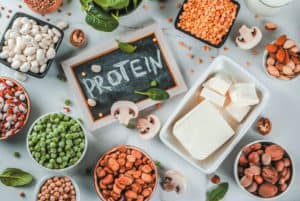What Is Cholesterol?
Cholesterol is present in every cell of the body and has important natural functions when it comes to digesting foods, producing hormones, and generating vitamin D. The body produces it, but people also consume it in food. It is a waxy and fat-like in appearance.
Cholesterol is both good and bad. At normal levels, it is an essential substance for the body. However, if concentrations in the blood get too high, it becomes a silent danger that puts people at risk of a chronic illness.
So basically, if there is too much cholesterol in the body, it builds up. The waxy buildup, called plaque, sticks to the insides of the arteries. As the arteries narrow and clog, it is a difficult for the blood to flow through them. The blockage can lead to a blood clot, stroke, or heart disease.
Functions Of Cholesterol
Cholesterol has four primary functions, without which we could not survive.
These are:
- Contributing to the structure of cell walls
- Making up digestive bile acids in the intestine
- Allowing the body to produce vitamin D
- Enabling the body to make certain hormones
Factors Contributing To High Cholesterol
Many things may increase your risk for high cholesterol, including:
- Genetics: High cholesterol runs in some families.
- Age: As we age, our cholesterol levels rise.
- Medicines: Certain drugs can elevate cholesterol levels.
- Obesity: Individuals with overweight or obese body mass indices are at greater risk for high cholesterol.
- Diet: Consuming high quantities of saturated and trans fats can raise LDL cholesterol levels.
- Inactivity: Activity helps to elevate HDL cholesterol. Lack of activity has the reverse effect — it increases LDL cholesterol.
- Smoking: Tobacco products decrease HDL and increase LDL. The link between smoking and high cholesterol is greater for women.
Types Of Cholesterol
-
Low-density Lipoproteins (LDL), or “Bad” Cholesterol
LDL is associated with an increased risk of cardiovascular diseases. Some studies show a strong correlation between LDL and the risk of cardiovascular diseases in both men and women. Evidence also suggests that decreasing blood levels of LDL-C reduces the risk of CVD.
Low-density lipoprotein (LDL) is often called “bad cholesterol.” It carries cholesterol to your arteries. If your levels of LDL cholesterol are too high, it can build up on the walls of your arteries.
The buildup is also known as cholesterol plaque. This plaque can narrow your arteries, limit your blood flow, and raise your risk of blood clots. If a blood clot blocks an artery in your heart or brain, it can cause a heart attack or stroke.
-
High-density Lipoproteins (HDL), or “Good” Cholesterol
HDL is frequently known as “the good cholesterol.” In addition to transporting cholesterol around the body, HDL collects cholesterol that is not being used by cells and brings them back to the liver to be recycled or destroyed.
But HDL does not completely eliminate LDL cholesterol. Only one-third to one-fourth of blood cholesterol is carried by HDL. A healthy HDL level may protect against heart attack and stroke. Studies show that low levels of HDL increase the risk of heart disease.
What About Triglycerides?
Triglycerides are the most common form of fat in food. They create fuel for your body to use not in the short-term, but in the future.
When your body breaks down carbs, some simple sugars are used quickly by your body for energy. Others cause an excess of sugar to build up in your bloodstream.
Your body then releases insulin to help that sugar get inside your cells and be used. But if your cells don’t need that energy, most of it will be converted to triglycerides, which will be stored as fat.
Because your body needs to produce extra triglycerides to deal with your sugar problem, you’re not only adding hard-to-get-rid of storage fat to your body, you’re also building up the levels of triglycerides in your blood. That’s why elevated triglycerides are often seen as a byproduct of insulin resistance.
When you know exactly how cholesterol works in your body, you may see the keto diet in a whole new light. You will also probably need to rethink everything you thought you knew about the link between Keto and Cholesterol.
If you’ve been wondering how entering ketosis helps you lose weight and feel more energetic without raising your cholesterol numbers, this article will answer all your questions with science-based evidence.
Healthy Eating Tips And Cholesterol
The best starting point for a healthy diet is to eat a wide variety of foods from each of the five food groups, in the amounts recommended. This helps maintain a healthy and interesting diet and provides a range of different nutrients to the body. Eating a variety of foods promotes good health and can help reduce the risk of disease.
The five food groups are:
- fruit
- vegetables and legumes/beans
- lean meats and poultry, fish, eggs, tofu, nuts, and seeds, legumes/beans
- grain (cereal) foods, mostly wholegrain and high fiber varieties
- milk, yogurt, cheese, and alternatives, mostly reduced fat.
Foods are grouped together because they provide similar amounts of key nutrients. For example, key nutrients of the milk, yogurt, cheese, and alternatives group include calcium and protein.
Additional tips to help you manage your cholesterol include:
- Limit takeaway foods, such as pastries, pies, pizza, hot chips, fried fish, hamburgers, and creamy pasta dishes, to once a week.
- Limit salty, fatty, and sugary snack foods, such as crisps, cakes, pastries, biscuits, lollies, and chocolate, to once a week.
- Eat plenty of vegetables (aim for five half-cup serves of vegetables every day).
- Choose wholegrain loaves of bread, cereal, pasta, rice, and noodles.
- Snack on plain, unsalted nuts and fresh fruit (eat two serves of fruit every day).
- Incorporate peas (such as split peas), beans (such as haricot beans, kidney beans, baked beans, three-bean mix), or lentils into at least two meals a week.
- Use spreads and margarine made from canola, sunflower, or olive oil, instead of butter.
- Add a variety of oils for cooking – some good choices include canola, sunflower, soybean, olive, sesame, and peanut oils.
- Use salad dressings and mayonnaise made from oils such as canola, sunflower, soybean, olive, sesame, and peanut oils.
- Include two or three serves of plant-sterol-enriched foods every day (for example, plant-sterol-enriched margarine, yogurt, milk, and bread).
- Have two to three portions (150 grams each) of oily fish every week. The fish may be fresh, frozen, or canned.
- Include up to six eggs every week.
- Select lean meat (meat trimmed of fat, and poultry without skin).
- Choose reduced-fat, low-fat or no-fat milk, yogurt, or calcium-added non-dairy food and drinks.
- Limit processed meats including sausages and deli meats, such as salami.
Fiber
If you are trying to lower your blood cholesterol, aim to eat foods that are high in dietary fiber, particularly soluble fiber, because they can reduce the amount of LDL cholesterol in your blood. These foods include fruits, legumes (such as chickpeas, lentils, soybeans, three-bean mix, and baked beans) and cereals (for example, oats and barley).
Fats
Following a healthy, balanced diet that is low in saturated fats and trans-fats can help to lower blood cholesterol.
Aim to replace foods that contain unhealthy, saturated, and trans-fats with foods that contain polyunsaturated and monounsaturated fats.
Foods high in (unhealthy) saturated fats include:
- fatty cuts of meat
- full-fat dairy products such as milk, cream, cheese and yogurt
- deep-fried fast foods
- processed foods such as biscuits and pastries
- takeaway foods such as hamburgers and pizza
- coconut oil
- butter.
Foods high in (unhealthy) trans fats include:
- deep-fried foods
- baked goods such as pies, pastries, cakes, and biscuits
- butter.
Foods high in (healthy) polyunsaturated fats include:
- margarine spreads and oils such as sunflower, soybean, and safflower
- oily fish
- some nuts and seeds.
Foods high in (healthy) monounsaturated fats include:
- margarine spreads and oils, such as olive, canola, and peanut
- avocados
- some nuts.
In A Nutshell
It’s time for something different. Limiting your fat intake and dietary cholesterol doesn’t work. A diet that boosts energy levels and is effective for boosting HDL while still allowing weight loss.
All your excuses end right here, stop waiting and start today, this is as easy as it gets! Check out our transformation stories, health content, and recipes! Follow us on Instagram for the daily dose of a Healthy Lifestyle!












